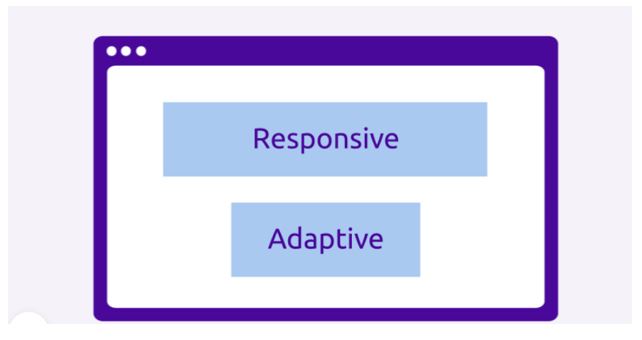
The plan is at first made for mobiles and really at that time adjusted for work areas. It conflicts with a grounded practice when greater screens go first. This method assists with making explained mobile interfaces that can be adjusted for work areas later.
In this post, App Developer Dubai will discuss the contrasts of versatile first website composition with versatile and responsive.
Contents
What is Adaptive Design?
Versatile sites are made of a few formats. Every format has an alternate position of components custom fitted for different screen sizes. At the point when a client opens the site, the program’s motor characterizes their screen size, goal, and perspective proportion. These variables function as triggers assisting with picking and showing a reasonable format.
What is Responsive Design?
In a responsive plan, the site’s design is contracting or growing as indicated by clients’ showcase widths. Regardless of whether the window is changing in one pixel, the page will somewhat rework its components.
This methodology allows getting a good deal on planning the mobile adaptation. However, it’s imperative to ensure that all components look great on changed gadgets.
Versatile and responsive plans are indistinguishable. The two of them acclimate to various screen sizes. The thing that matters is that in a responsive plan the substance is fixed in size, while in a versatile plan the substance is evolving progressively.
Mobile-First Design
One of the issues with responsive and versatile plans lay in a good old methodology of making a site for work areas first and afterward adjusting it for cell phones. Thus, versatile pages frequently look more regrettable.
The mobile-first system works alternately: cell phones start things out and afterward the plan is adapted to work areas. Planners following this system, go from more modest to greater screens. It’s essentially about giving the correct client experience to the fitting gadgets.
The fundamental objective of this methodology is to put all the vital substance — catches, messages, CTAs, highlights — in the restricted space. And every one of these components ought to be placed in the perfect spot to be open and perceptible.
Why is mobile-first design important for Business?
The versatile first site is acceptable because:
The Content
Talking about pointless UI components, we don’t mean you need to eliminate them from all site forms. They can in any case be helpful for the work area variant.
The requirements of mobile and work area clients contrast. Work area clients frequently search for more itemized data or highlights that have no sense on mobile sites.
Once more, the principal objective of the versatile first plan is to put catches, highlights, CTAs, and different components where they’ll be valuable.
Along these lines, here are a few hints by Mobile app developer Dubai to help you manage this planning approach more simpler:
- Prioritize the substance. Significant components from that report or bookkeeping page will go to the most obvious spots.
- Increase the tappable territory. It’s fundamental since fingerprints are essentially more extensive than pixelated mice. So all interactive and navigational components ought to be greater. For instance, Apple suggests making tappable zones of 44px. Ensure that hyperlinks and intuitive components have sufficient space and somewhat amplify them if necessary.
- Typography. Ensure that significant writings are not under 16pt in size. Additionally, make the line dividing adequate for happiness with perusing.
- Be steady. Urge your group to begin wireframing/planning from the littlest to the greatest screens continuously expanding the artboard’s size. Thusly, your group will cover all screen sizes from versatile to work area variants.
- Think of it as it is a mobile application. Clients became accustomed to specific examples of connections with applications. Thoroughly consider the route, gadgets, AJAX questions, and different components clients can communicate with.
- Makeup a list. Draw up a report or bookkeeping page with the full rundown of the substance that you’d prefer to put on the site.
- Avoid huge and complex realistic pictures. Scene photography and complex illustrations are inadequately shown on minuscule screens.
Wrapping Up
Dismissing a mobile-first plan is a UX sin nowadays. Great client experience ought to be at the core of your item. This procedure is viewed as quite possibly the most viewpoint and complex methodologies. It’ll fit business associations, administrations, and different items that depend on the cutting-edge high speed of life.
Contact me today to incorporate the latest features into your mobile app.

